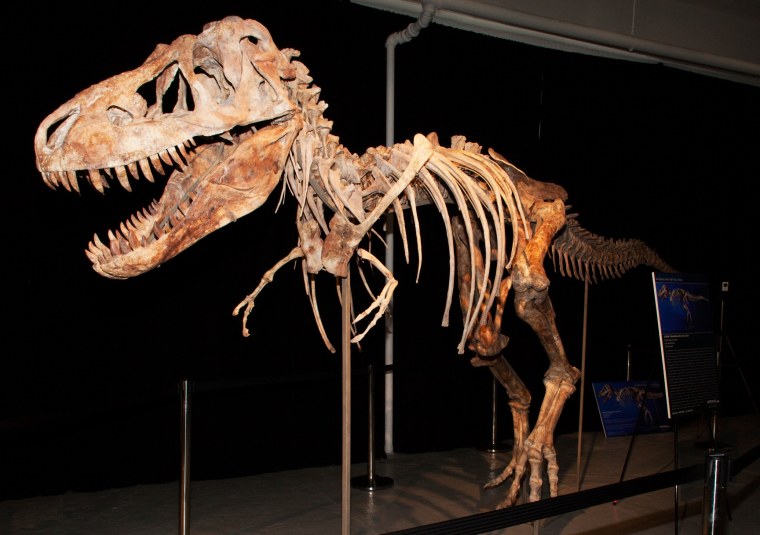One of the more unusual arrest warrants in U.S. history was issued Tuesday when a federal judge authorized the Department of Homeland Security to seize a dinosaur from an art storage company. There's no need for handcuffs, though. It's been dead for 70 million years.
U.S. District Judge Kevin Castel signed the warrant after finding there was "probable cause to believe" that the nearly complete Tyrannosaurus bataar skeleton is subject to forfeiture under U.S. laws. The U.S. filed a lawsuit against the skeletal property a day earlier, seeking to seize it for an eventual return to Mongolia.
It is typical in government seizure cases for the object to be seized to be named as a defendant. But it's not so common for an object to have an alias, in this instance "One Tyrannosaurus Bataar Skeleton" is also known as "LOT 49315 listed on Page 92 of The Heritage Auctions May 20, 2012 Natural History Auction Catalog."
The 8-foot-tall, 24-foot-long skeleton was described in the catalog as being "a stupendous, museum-quality specimen of one of the most emblematic dinosaurs ever to have stalked this Earth." It is currently held at a Cadogan Tate Fine Art property in Queens. A message left with the company Tuesday was not immediately returned.
The lawsuit said the Tyrannosaurus bataar skeleton was brought in March 2010 from Great Britain to Gainesville, Fla., with erroneous claims that it had originated in Great Britain and was worth only $15,000. It sold at auction on May 20 for more than $1 million, though the sale was contingent upon the outcome of court proceedings.
Jim Halperin, co-founder of Heritage Auctions, the dinosaur's Dallas-based custodian, has said a consignor bought the fossils in good faith and spent a year and considerable expense restoring them.
Halperin said Tuesday about the judge's order, "We have cooperated in the investigation process for paleontologists to expeditiously examine the skeleton, and we will continue to cooperate with authorities in an ongoing effort to reach a fair and just resolution to this matter."
Federal authorities say five experts viewed the remains on June 5, agreeing unanimously that the skeleton was a Tyrannosaurus bataar and almost certainly originated in the Nemegt Basin in Mongolia.
Tyrannosaurus bataars were first discovered in 1946 during a joint Soviet-Mongolian expedition to the Gobi Desert in the Mongolian Omnogovi Province. Since 1924, Mongolia has enacted laws declaring fossils to be the property of the government of Mongolia and criminalizing their export from the country.
